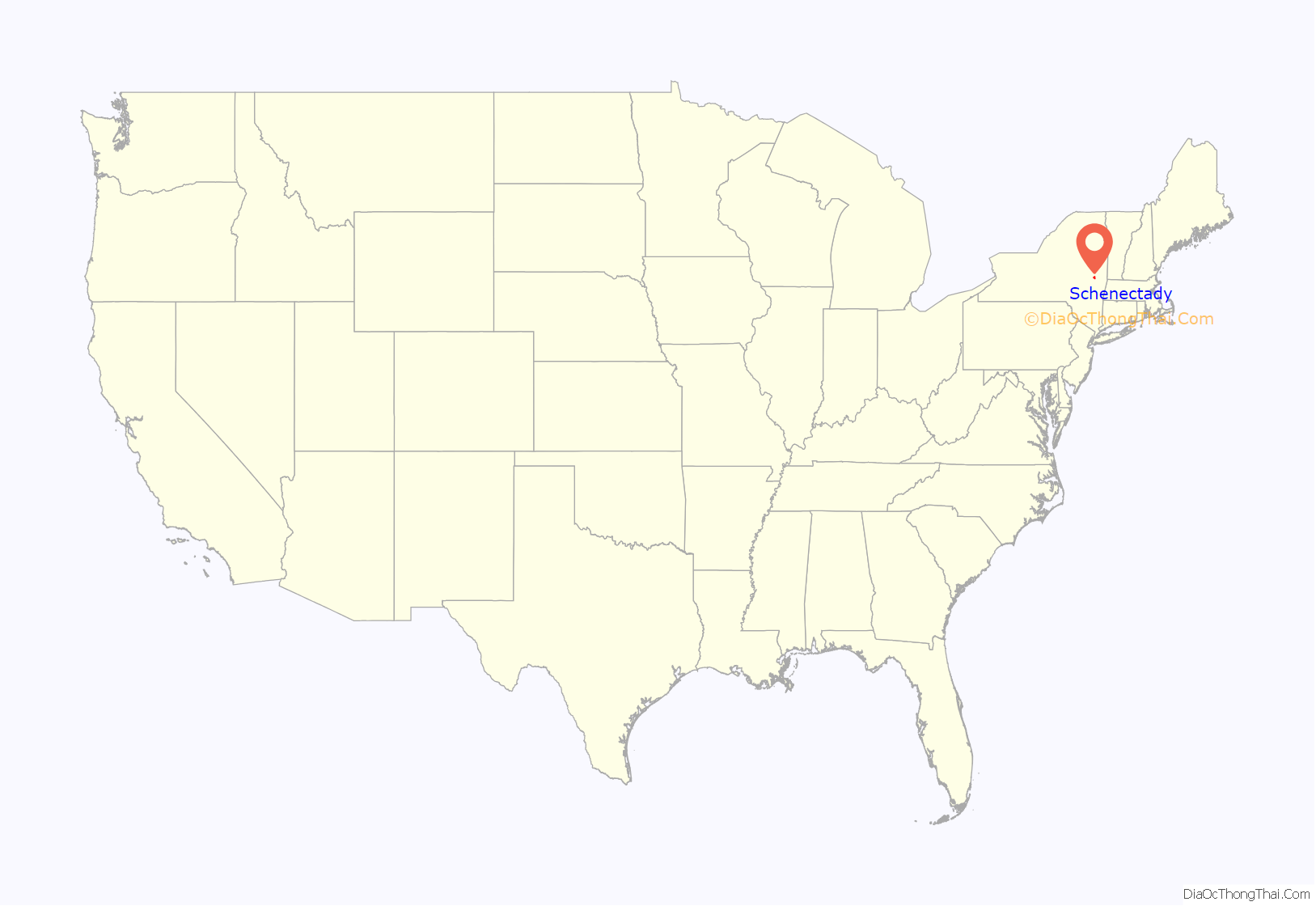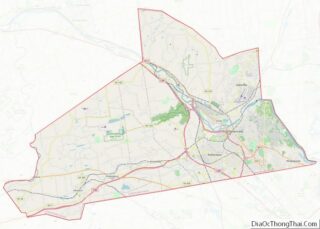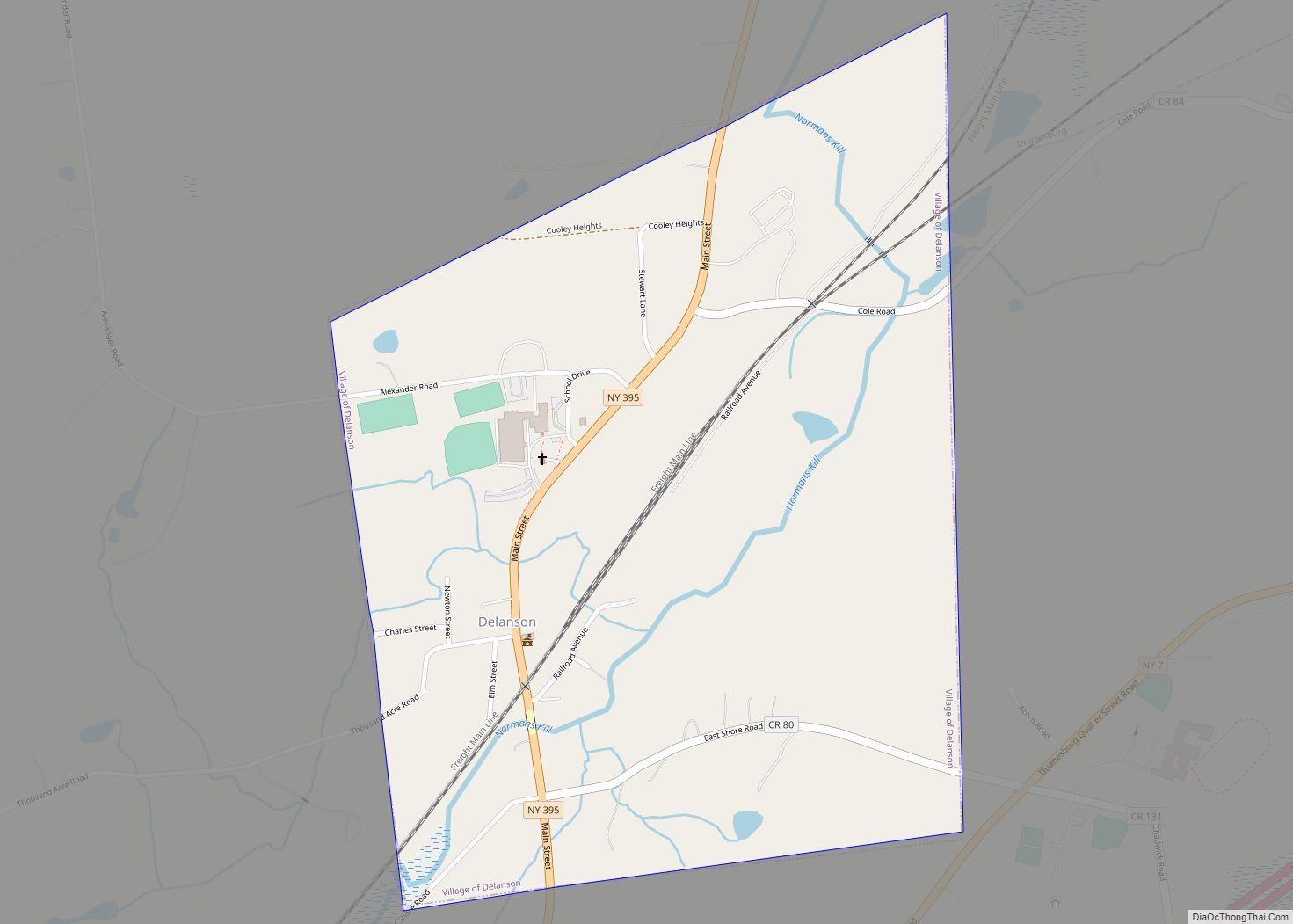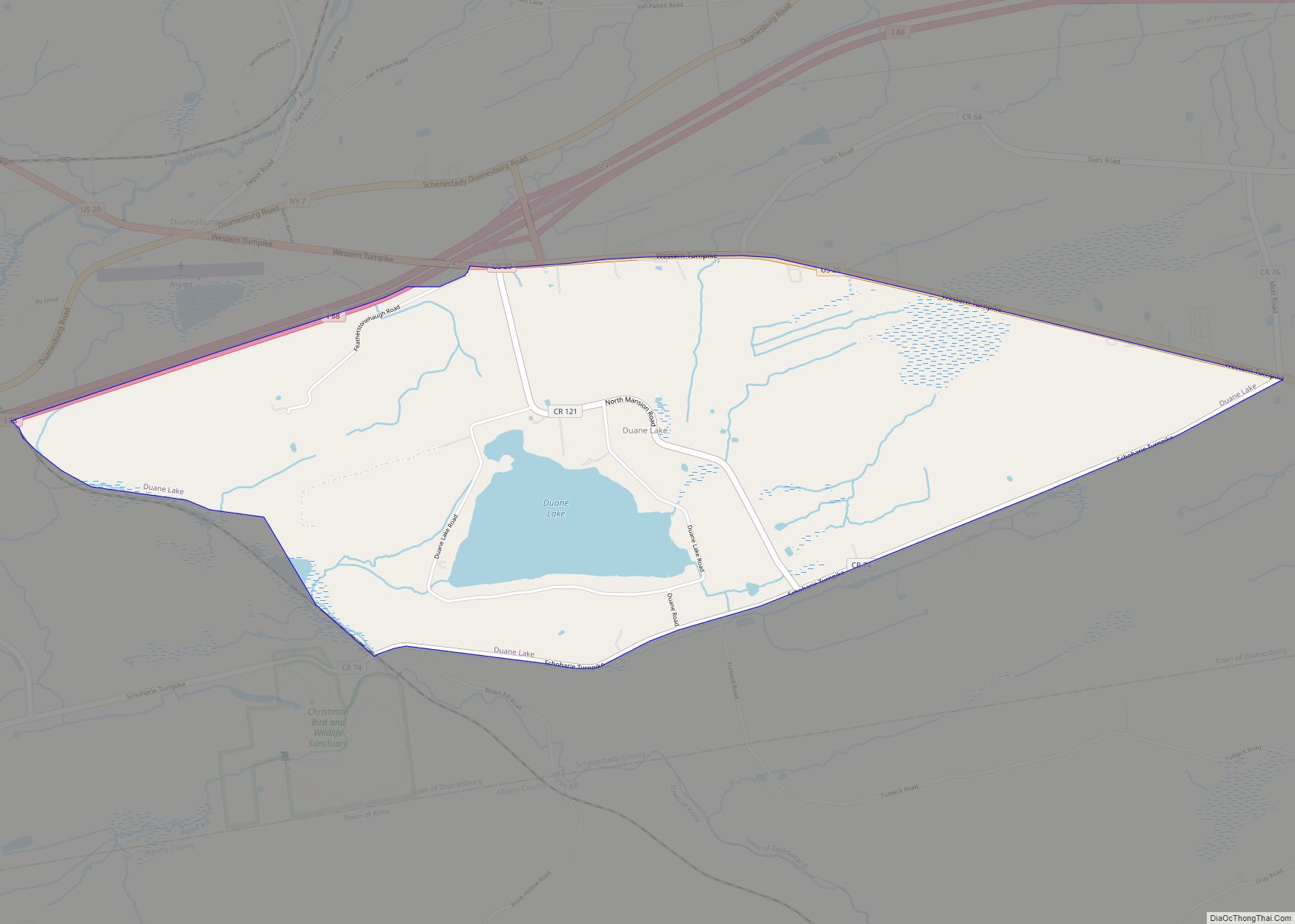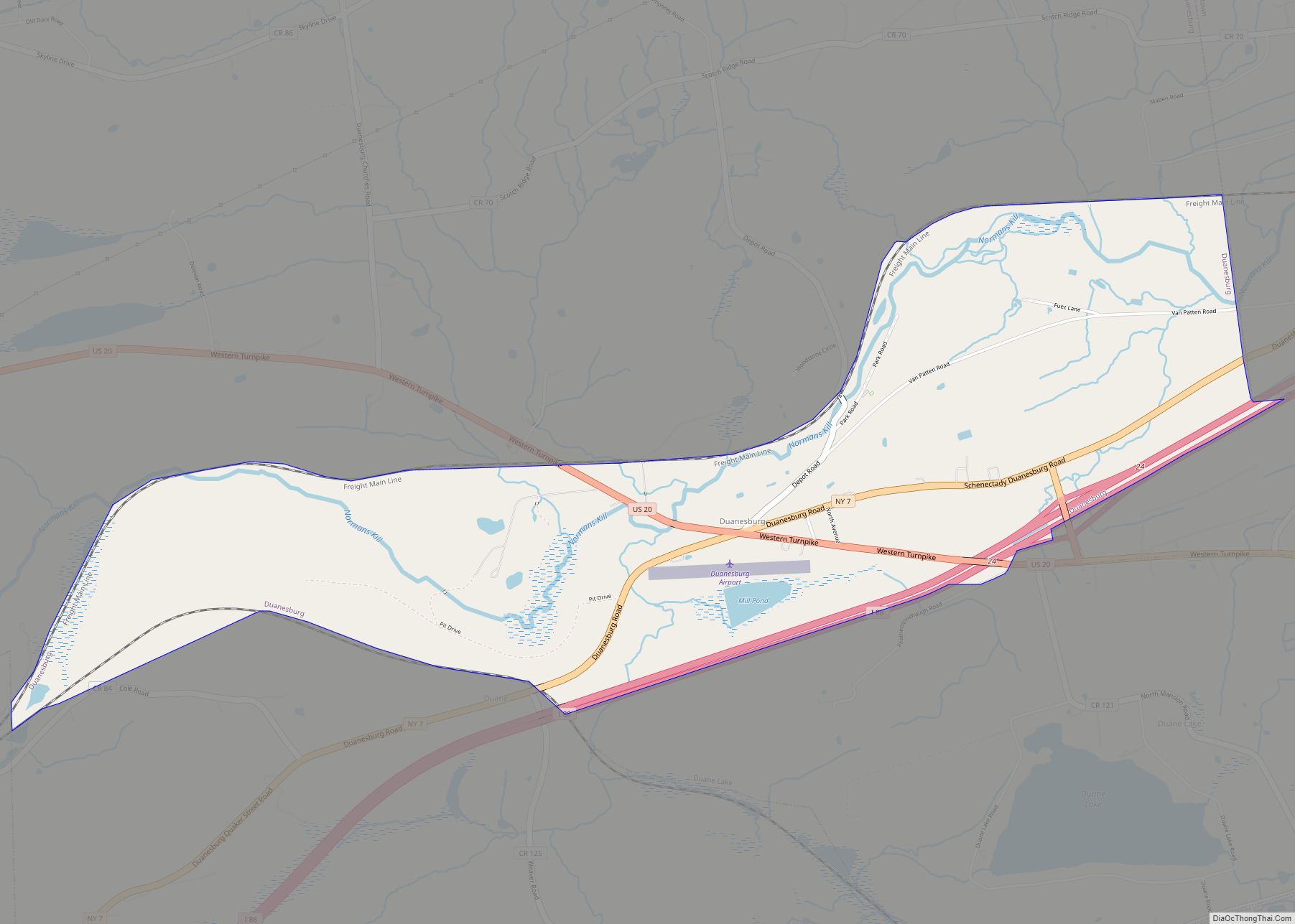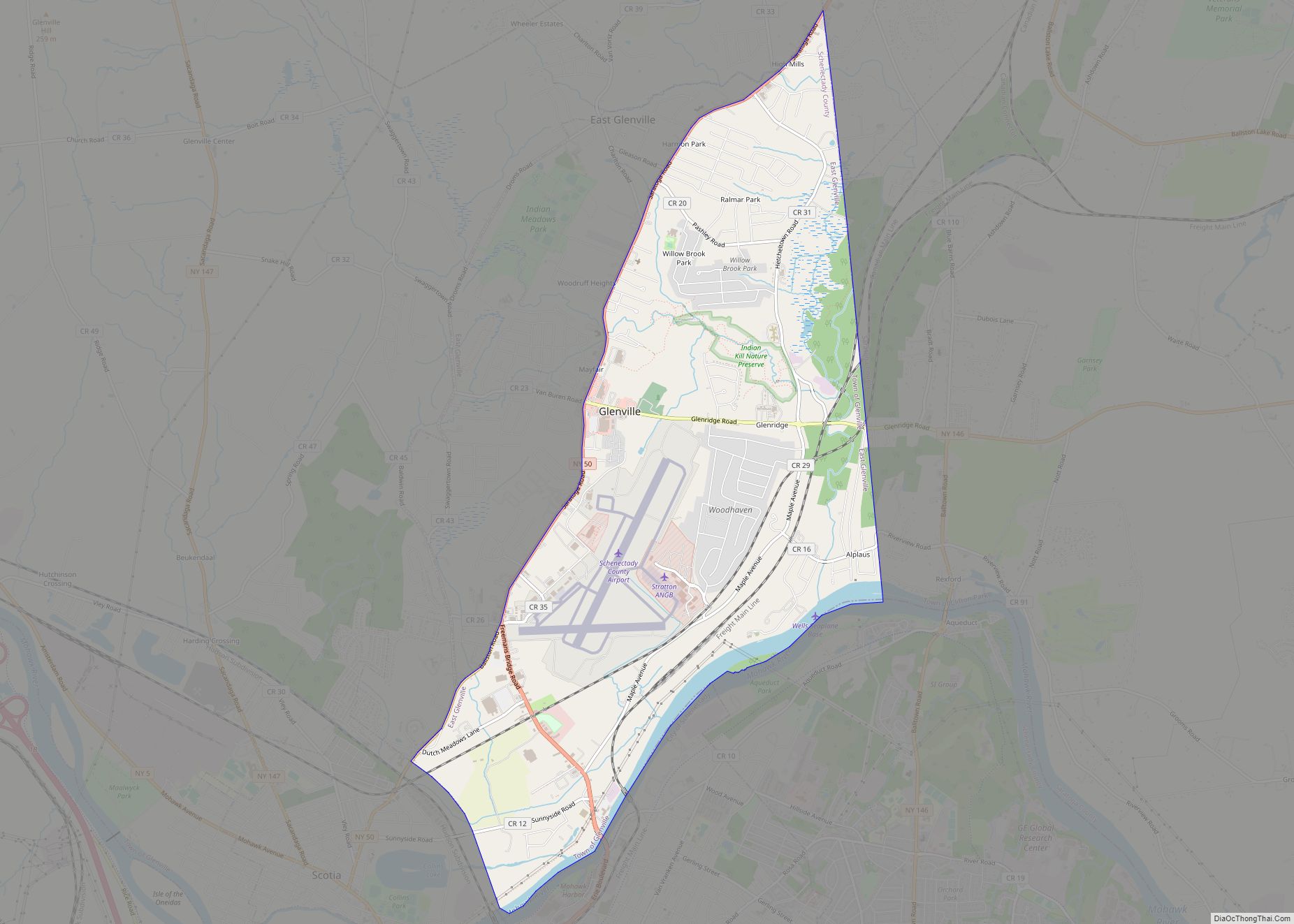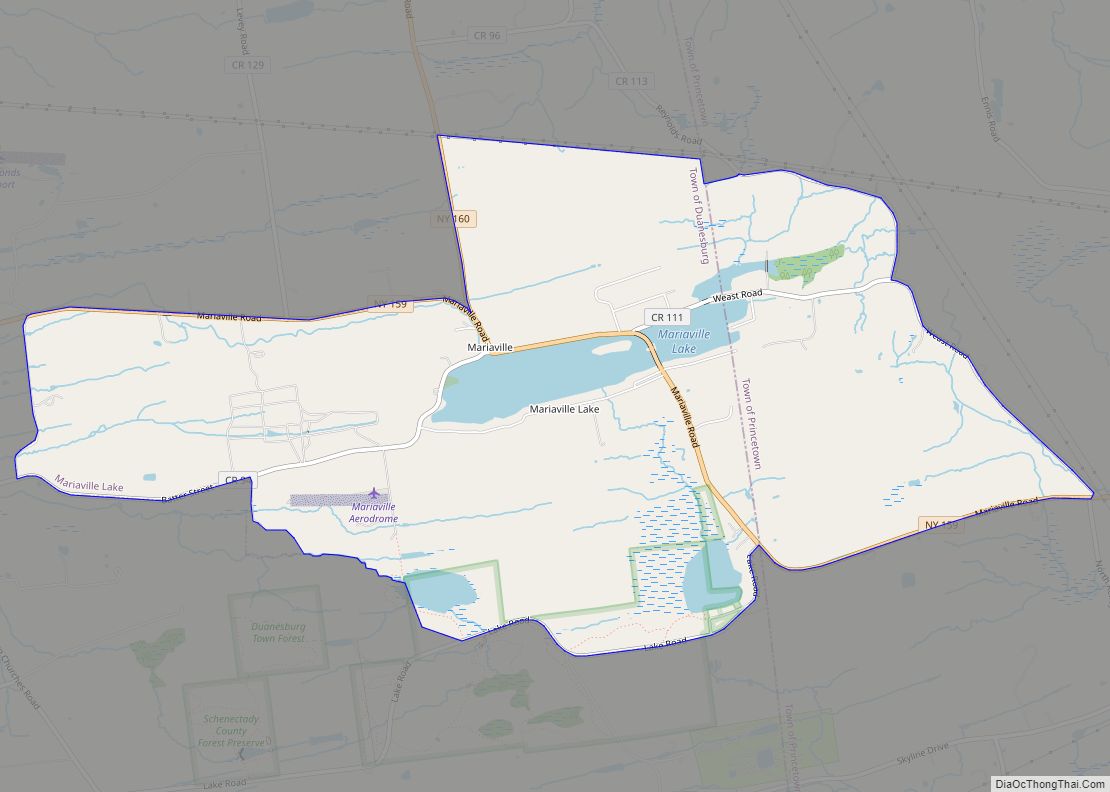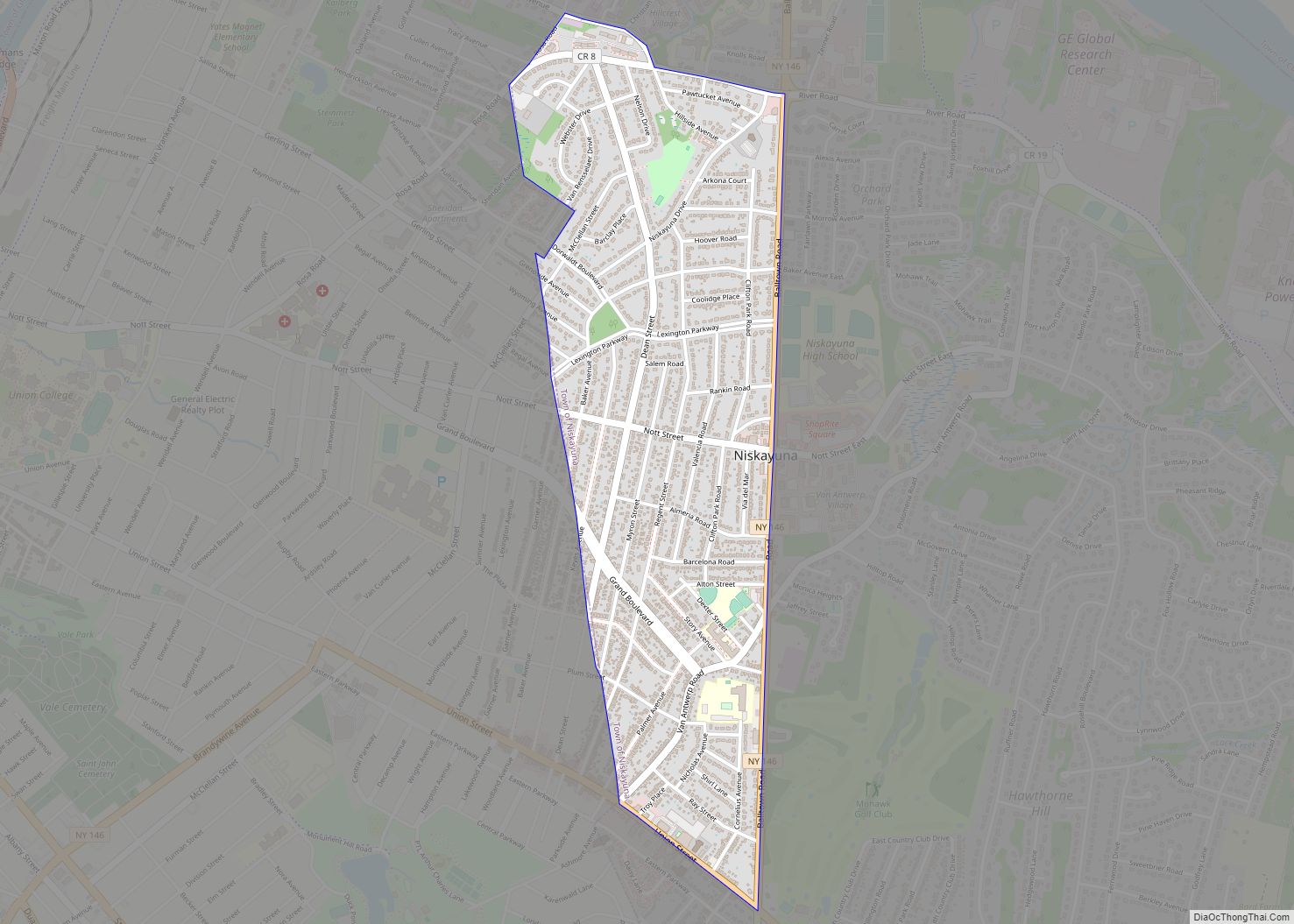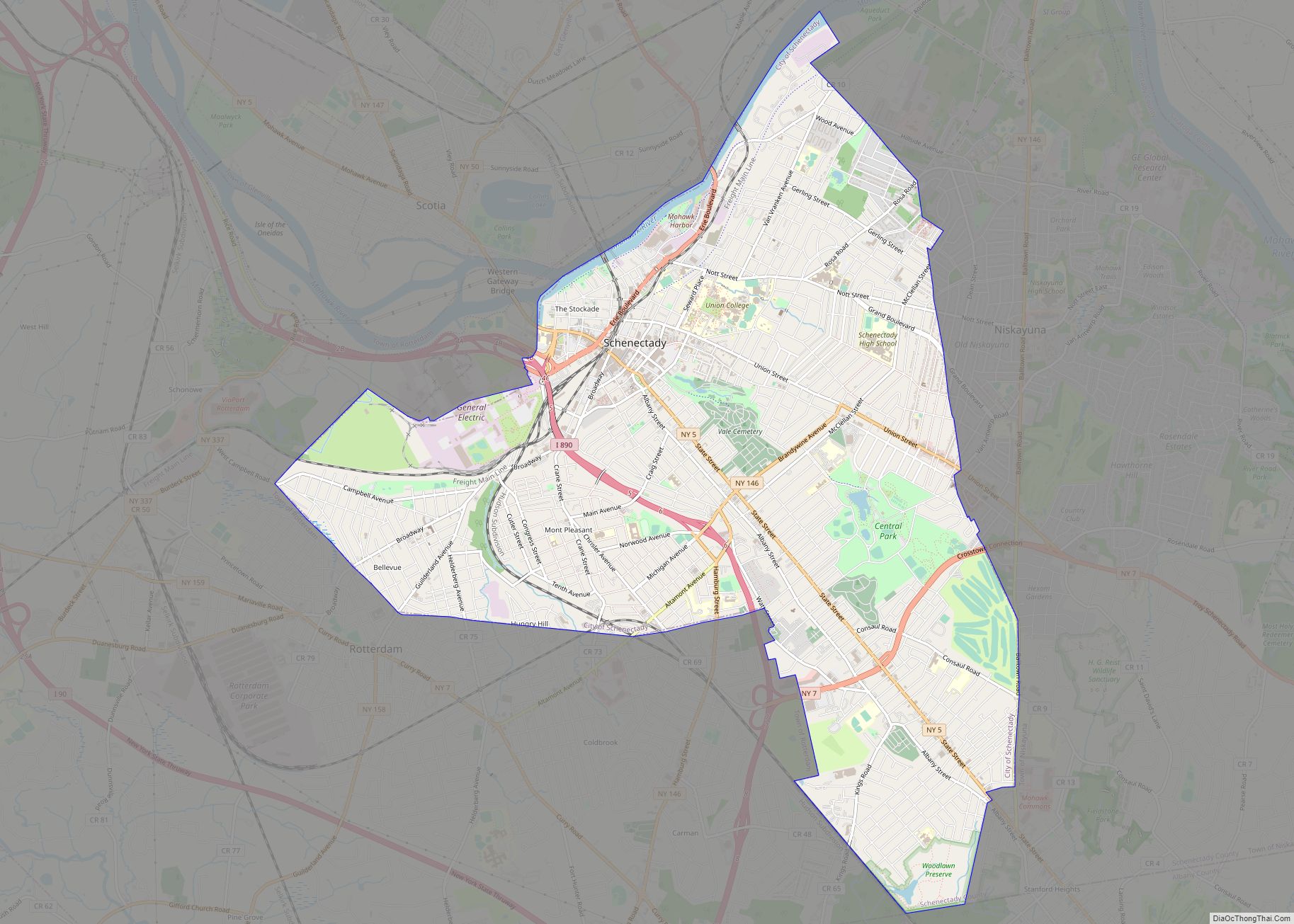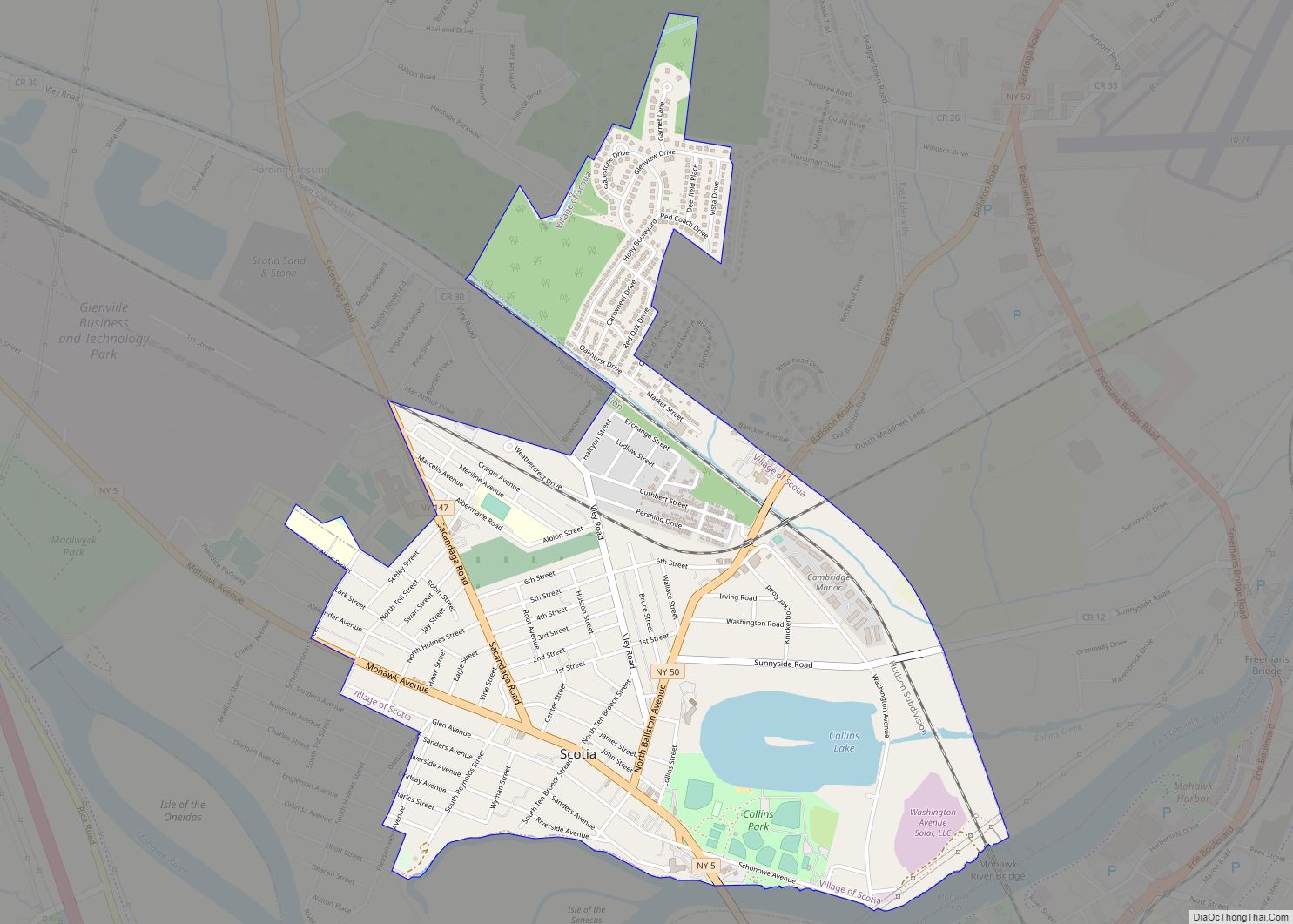Schenectady (/skəˈnɛktədi/) is a city in Schenectady County, New York, United States, of which it is the county seat. As of the 2020 census, the city’s population of 67,047 made it the state’s ninth-largest city by population. The city is in eastern New York, near the confluence of the Mohawk and Hudson rivers. It is in the same metropolitan area as the state capital, Albany, which is about 15 miles (24 km) southeast.
Schenectady was founded on the south side of the Mohawk River by Dutch colonists in the 17th century, many of whom came from the Albany area. The name “Schenectady” is derived from the Mohawk word skahnéhtati, meaning “beyond the pines” and used for the area around Albany, New York. Residents of the new village developed farms on strip plots along the river. Connected to the west by the Mohawk River and Erie Canal, Schenectady developed rapidly in the 19th century as part of the Mohawk Valley trade, manufacturing, and transportation corridor. By 1824, more people worked in manufacturing than agriculture or trade; like many New York cities, it had a cotton mill that processed cotton from the Deep South. In the 19th century, nationally influential companies and industries developed in Schenectady, including General Electric and American Locomotive Company (ALCO), which were powers into the mid-20th century. Schenectady was part of emerging technologies, with GE collaborating in the production of nuclear-powered submarines and, in the 21st century, working on other forms of renewable energy.
| Name: | Schenectady city |
|---|---|
| LSAD Code: | 25 |
| LSAD Description: | city (suffix) |
| State: | New York |
| County: | Schenectady County |
| Incorporated: | 1798 |
| Land Area: | 10.81 sq mi (27.99 km²) |
| Water Area: | 0.17 sq mi (0.44 km²) |
| Population Density: | 6,203.46/sq mi (2,395.24/km²) |
| ZIP code: | 12301–12309, 12325, 12345 |
| Area code: | 518 |
| FIPS code: | 3665508 |
| GNISfeature ID: | 0964570 |
| Website: | www.cityofschenectady.com |
Online Interactive Map
Click on ![]() to view map in "full screen" mode.
to view map in "full screen" mode.
Schenectady location map. Where is Schenectady city?
History
When first encountered by Europeans, the Mohawk Valley was the territory of the Mohawk nation, one of the Five Nations of the Iroquois Confederacy, or Haudenosaunee. They had occupied territory in the region since at least 1100 AD. Starting in the early 1600s the Mohawk moved their settlements closer to the river and by 1629, they had also taken over territories on the Hudson River’s west bank that were formerly held by the Algonquian-speaking Mahican people.
In the 1640s, the Mohawk had three major villages, all on the Mohawk River’s south side. The easternmost one was Ossernenon, about 9 miles west of present-day Auriesville, New York. When Dutch settlers developed Fort Orange (present-day Albany, New York) in the Hudson Valley beginning in 1614, the Mohawk called their settlement skahnéhtati, meaning “beyond the pines,” referring to a large area of pine barrens between the Mohawk settlements and the Hudson River. About 3,200 acres of this unique ecosystem are now protected as the Albany Pine Bush. Eventually, this word entered the lexicon of the Dutch settlers. The settlers in Fort Orange used skahnéhtati to refer to the new village at the Mohawk flats (see below), which became known as Schenectady (with a variety of spellings).
In 1661, Arendt van Corlaer, (later Van Curler), a Dutch immigrant, bought a large piece of land on the Mohawk River’s south side. The Colonial government gave other colonists grants of land in this portion of the flat fertile river valley, as part of New Netherland. The settlers recognized the Mohawk had cultivated these bottomlands for maize by the Mohawk for centuries. Van Curler took the largest piece of land; the remainder was divided into 50-acre plots for the other first fourteen proprietors; Alexander Lindsey Glen, Philip Hendrickse Brouwer, Simon Volkertse Veeder, Pieter Adrianne Van Wogglelum, Teunize Cornelise Swart, Bastia De Winter atty for Catalyn De Vos, Gerrit Bancker, William Teller, Pieter Jacobse Borsboom, Pieter Danielle Van Olinda, Jan Barentse Wemp(le), Jacques Cornelize Van Slyck, Marten Cornelize Van Esselstyn, and Harmen Albertse Vedder. As most early colonists were from the Fort Orange area, they may have anticipated working as fur traders, but the Beverwijck (later Albany) traders kept a monopoly of legal control. The settlers here turned to farming. Their 50-acre lots were unique for the colony, “laid out in strips along the Mohawk River”, with the narrow edges fronting the river, as in French colonial style. They relied on rearing livestock and wheat. The proprietors and their descendants controlled all the land of the town for generations, essentially acting as government until after the Revolutionary War, when representative government was established.
Beginning from the first decades of European colonization, Dutch colonists formed relationships with Mohawk women, though these did not usually result in marriage. Their children were raised within Mohawk communities, as the tribe had a matrilineal kinship system, and these multiracial offspring were considered to be born into the mother’s clan. During the colonial era, the fur trade formed one of the important trading relationships between Indians and colonists. In response to labor shortages among Dutch colonists, enslaved Africans were imported to work on farmsteads in Schenectady.
Some Euro-Indian descendants, such as Jacques Cornelissen Van Slyck and his sister Hilletie van Olinda, who were of Dutch, French and Mohawk ancestry, became interpreters and intermarried with Dutch colonists. They also gained land in the Schenectady settlement. They were among the few métis who seemed to move from Mohawk to Dutch society, as they were described as “former Indians”, although they did not always have an easy time of it. In 1661 Jacques inherited what became known as Van Slyck’s Island from his brother Marten, who had been given it by the Mohawk. Van Slyck family descendants retained ownership through the 19th century.
In 1664, an English fleet conquered the colony of New Netherland and renamed it New York. They confirmed the monopoly on the fur trade by Albany, and issued orders to prohibit Schenectady from the trade through 1670 and later. Settlers purchased additional land from the Mohawk in 1670 and 1672. (Jacques and Hilletie Van Slyck each received portions of land in the Mohawk 1672 deed for Schenectady.) Twenty years later (1684) Governor Thomas Dongan granted letters patent for Schenectady to five additional trustees.
On February 8, 1690, during King William’s War, French forces and their Indian allies, mostly Ojibwe and Algonquin warriors, attacked Schenectady by surprise, leaving 62 dead, 11 of them enslaved Africans. American history notes it as the Schenectady massacre. A total of 27 persons were taken captive, including five enslaved Africans; the raiders took their captives overland about 200 miles to Montreal and its associated Mohawk mission village of Kahnawake. Typically the younger captives were adopted by Mohawk families to replace people who had died. Through the early 18th century in the raiding between Quebec and the northern British colonies, some captives were ransomed by their communities. Colonial governments got involved only for high-ranking officers or other officials. In 1748, during King George’s War, the French and Indians attacked Schenectady again, killing 70 residents.
In 1765, Schenectady was incorporated as a borough. During the American Revolutionary War the local militia unit, the 2nd Albany County Militia Regiment, fought in the Battle of Saratoga and against Loyalist troops. Most of the wars in the Mohawk Valley were fought further west on the frontier in the areas of the German Palatine settlement which was west of Little Falls. Because of their close business and other relationships with the British, some settlers from the city were Loyalists and moved to Canada in the late stages of the Revolution. The Crown granted them land in what became known as Upper Canada and later Ontario.
New Republic
It was not until after the Revolutionary War that the village residents reduced the power of the descendants of the early trustees and gained representative government. The settlement was chartered as a city in 1798. Long interested in supporting higher education and morals, the members of the city’s three oldest churches—the Dutch First Reformed Church, St. Georges Episcopal Church, and First Presbyterian Church—formed a “union” and founded Union College in 1795 under a charter from the state. The school had started in 1785 as Schenectady Academy. This founding was part of the expansion of higher education in upstate New York in the postwar years.
During this period, migrants poured into upstate and western New York from New England, but there were also new immigrants from England and Europe. Many traveled west along the Mohawk River, settling in the western part of the state, where they developed more agriculture on former Iroquois lands. A dairy industry developed in the central part of the state. New settlers were predominantly of English and Scotch-Irish descent. In 1819, Schenectady suffered a fire that destroyed more than 170 buildings and most of its historic, distinctive Dutch-style architecture.
New York had passed a law for gradual abolition of slavery in 1799, however in 1824 there were still a total of 102 slaves in Schenectady County with nearly half residing in the city. That year the city of Schenectady had a total population of 3939, which included 240 free blacks, 47 slaves, and 91 foreigners.
In the 19th century, after completion of the Erie Canal in 1825, Schenectady became an important transportation, manufacturing and trade center. By 1824 more of its population worked in manufacturing than agriculture or trade. Among the industries was a cotton mill, which processed cotton from the Deep South. It was one of many such mills in upstate whose products were part of the exports shipped out of New York City. The city and state had many economic ties to the South at the same time that some residents became active in the abolitionist movement.
Schenectady benefited by increased traffic connecting the Hudson River to the Mohawk Valley and the Great Lakes to the west and New York City to the south. The Albany and Schenectady Turnpike (now State Street) was constructed in 1797 to connect Albany to settlements in the Mohawk Valley. The Mohawk and Hudson Railroad started operations in 1831 as one of the first railway lines in the United States, connecting the city and Albany by a route through the pine barrens between them. Developers in Schenectady quickly founded the Utica & Schenectady Railroad, chartered in 1833; Schenectady & Susquehanna Railroad, chartered May 5, 1836; and Schenectady & Troy Railroad, chartered in 1836, making Schenectady “the rail hub of America at the time” and competing with the Erie Canal. Commodities from the Great Lakes areas and commercial products were shipped to the East and New York City through the Mohawk Valley and Schenectady.
The last slaves in New York and Schenectady gained freedom in 1827, under the state’s gradual abolition law. The law first gave freedom to children born to slave mothers, but they were indentured to the mother’s master for a period into their early 20s. Union College established a school for black children in 1805, but discontinued it two years later. Methodists helped educate the children for a time but public schools did not accept them.
In the 1830s, the abolitionist movement grew in Schenectady. In 1836, Rev. Isaac Groot Duryee (also recorded as Duryea) co-founded the interracial Anti-Slavery Society at Union College and the Anti-Slavery Society of Schenectady in 1837. Freedom seekers were supported via the Underground Railroad route that ran through the area, passing to the west and north to Canada, which had abolished slavery.
In 1837 Duryee, together with others who were free people of color, co-founded the First Free Church of Schenectady (now the Duryee Memorial AME Zion Church). He also started a school for students of color. The abolitionist Theodore S. Wright, an African-American minister based in New York City, spoke at the church’s dedication and praised the school.
Through the late 19th century, new industries were established in the Mohawk Valley and powered by the river. Industrial jobs attracted many new immigrants, first from Ireland, and later in the century from Italy and Poland. In 1887, Thomas Edison moved his Edison Machine Works to Schenectady. In 1892, Schenectady became the headquarters of the General Electric Company. This business became a major industrial and economic force and helped establish the city and region as a national manufacturing center. GE became important nationally as a creative company, expanding into many different fields. American Locomotive Company also developed here, from a Schenectady company, and merging several smaller companies in 1901; it was second in the United States in the manufacture of steam locomotives before developing diesel technology.
20th century to present
Like other industrial cities in the Mohawk Valley, in the early 20th century, Schenectady attracted many new immigrants from eastern and southern Europe, as they could fill many of the new industrial jobs. It also attracted African Americans as part of the Great Migration out of the rural South to northern cities for work. General Electric and American Locomotive Company (ALCO) were industrial powerhouses, influencing innovation in a variety of fields across the country.
Schenectady is home to WGY, the second commercial radio station in the United States, (after WBZ in Springfield, Massachusetts which was the first station and named for Westinghouse). WGY was named for its owner, General Electric (the G), and the city of Schenectady (the Y). In 1928, General Electric produced the first regular television broadcasts in the United States, when the experimental station W2XB began regular broadcasts on Thursday and Friday afternoons. This television station is now WRGB; for many years it was the Capital District’s NBC affiliate. It has been the area’s CBS affiliate since 1981.
The city reached its peak of population in 1930. The Great Depression caused a loss of jobs and population in its wake. In the postwar period after World War II, some residents moved to newer housing in suburban locations outside the city. In addition, General Electric established some high-tech facilities in the neighboring town of Niskayuna, which contributed to continuing population growth in the county. In the latter part of the 20th century, Schenectady suffered from the massive industrial and corporate restructuring that affected much of the US, including in the railroads. It lost many jobs and population to other locations, including offshore. Since the late 20th century, it has been shaping a new economy, based in part on renewable energy. Its population increased from 2000 to 2010.
Schenectady Road Map
Schenectady city Satellite Map
Geography
According to the United States Census Bureau, the city has a total area of 11.0 square miles (28.49 km), of which 10.9 square miles (28.23 km) of it is land and 0.1 square miles (0.26 km) of it (1.27%) is water.
It is part of the Capital District, the metropolitan area surrounding Albany, the state of New York’s capital. Along with Albany and Troy, it is one of the three principal population and industrial centers in the region.
Interstate 890 runs through Schenectady, and the New York State Thruway (Interstate 90) is nearby. Amtrak has a station in Schenectady. The nearest airport is Schenectady County Airport; the nearest commercial airport is Albany International Airport.
ZIP code 12345, which is used by the GE plant in Schenectady, has attracted media attention on account of its simplicity.
Schenectady has a humid continental climate that is hot-summer (Dfa) bordering upon warm-summer (Dfb.) Average monthly temperatures range from 22.9 °F in January to 71.8 °F in July.[1]
See also
Map of New York State and its subdivision:- Albany
- Allegany
- Bronx
- Broome
- Cattaraugus
- Cayuga
- Chautauqua
- Chemung
- Chenango
- Clinton
- Columbia
- Cortland
- Delaware
- Dutchess
- Erie
- Essex
- Franklin
- Fulton
- Genesee
- Greene
- Hamilton
- Herkimer
- Jefferson
- Kings
- Lake Ontario
- Lewis
- Livingston
- Madison
- Monroe
- Montgomery
- Nassau
- New York
- Niagara
- Oneida
- Onondaga
- Ontario
- Orange
- Orleans
- Oswego
- Otsego
- Putnam
- Queens
- Rensselaer
- Richmond
- Rockland
- Saint Lawrence
- Saratoga
- Schenectady
- Schoharie
- Schuyler
- Seneca
- Steuben
- Suffolk
- Sullivan
- Tioga
- Tompkins
- Ulster
- Warren
- Washington
- Wayne
- Westchester
- Wyoming
- Yates
- Alabama
- Alaska
- Arizona
- Arkansas
- California
- Colorado
- Connecticut
- Delaware
- District of Columbia
- Florida
- Georgia
- Hawaii
- Idaho
- Illinois
- Indiana
- Iowa
- Kansas
- Kentucky
- Louisiana
- Maine
- Maryland
- Massachusetts
- Michigan
- Minnesota
- Mississippi
- Missouri
- Montana
- Nebraska
- Nevada
- New Hampshire
- New Jersey
- New Mexico
- New York
- North Carolina
- North Dakota
- Ohio
- Oklahoma
- Oregon
- Pennsylvania
- Rhode Island
- South Carolina
- South Dakota
- Tennessee
- Texas
- Utah
- Vermont
- Virginia
- Washington
- West Virginia
- Wisconsin
- Wyoming
